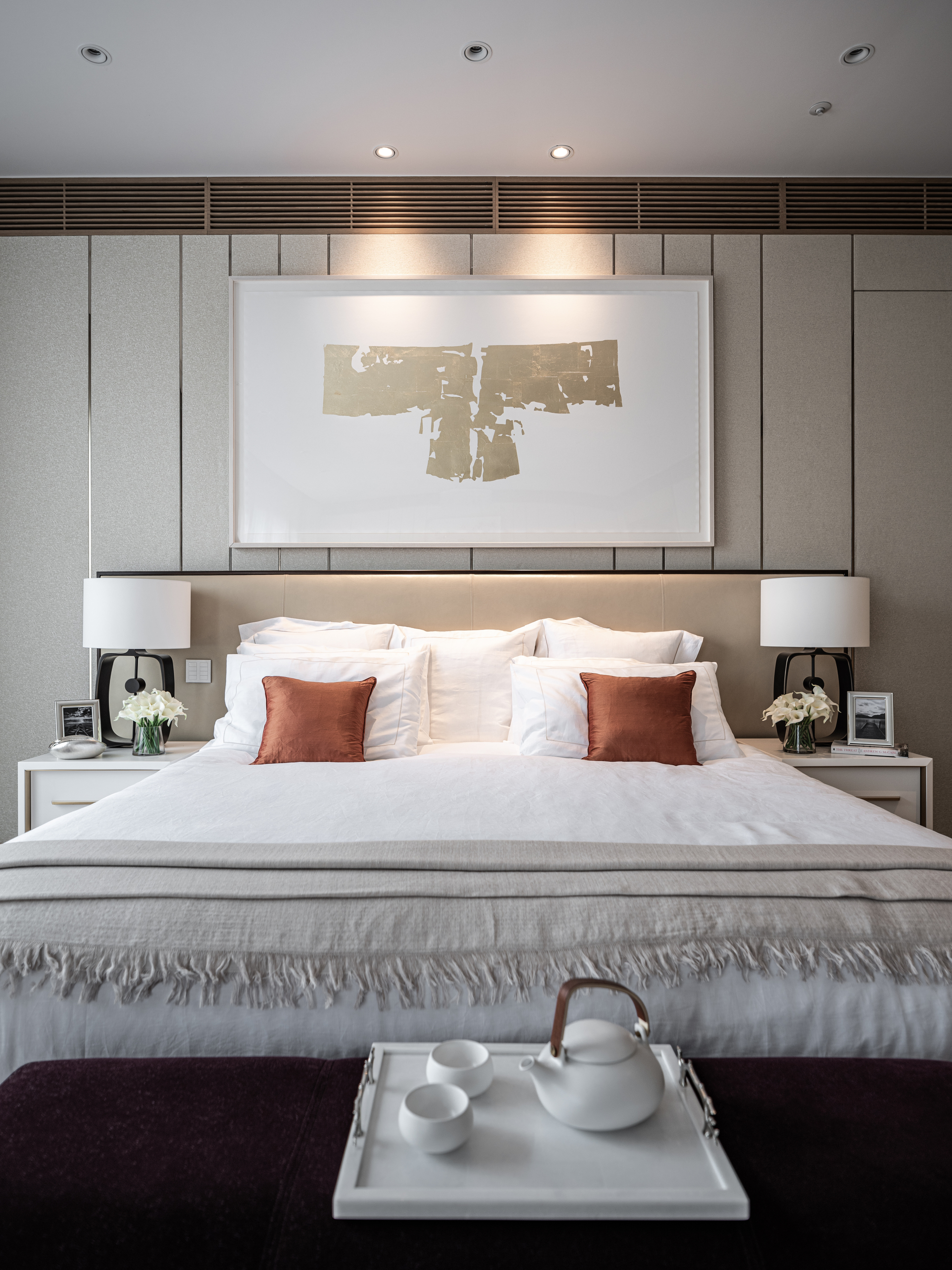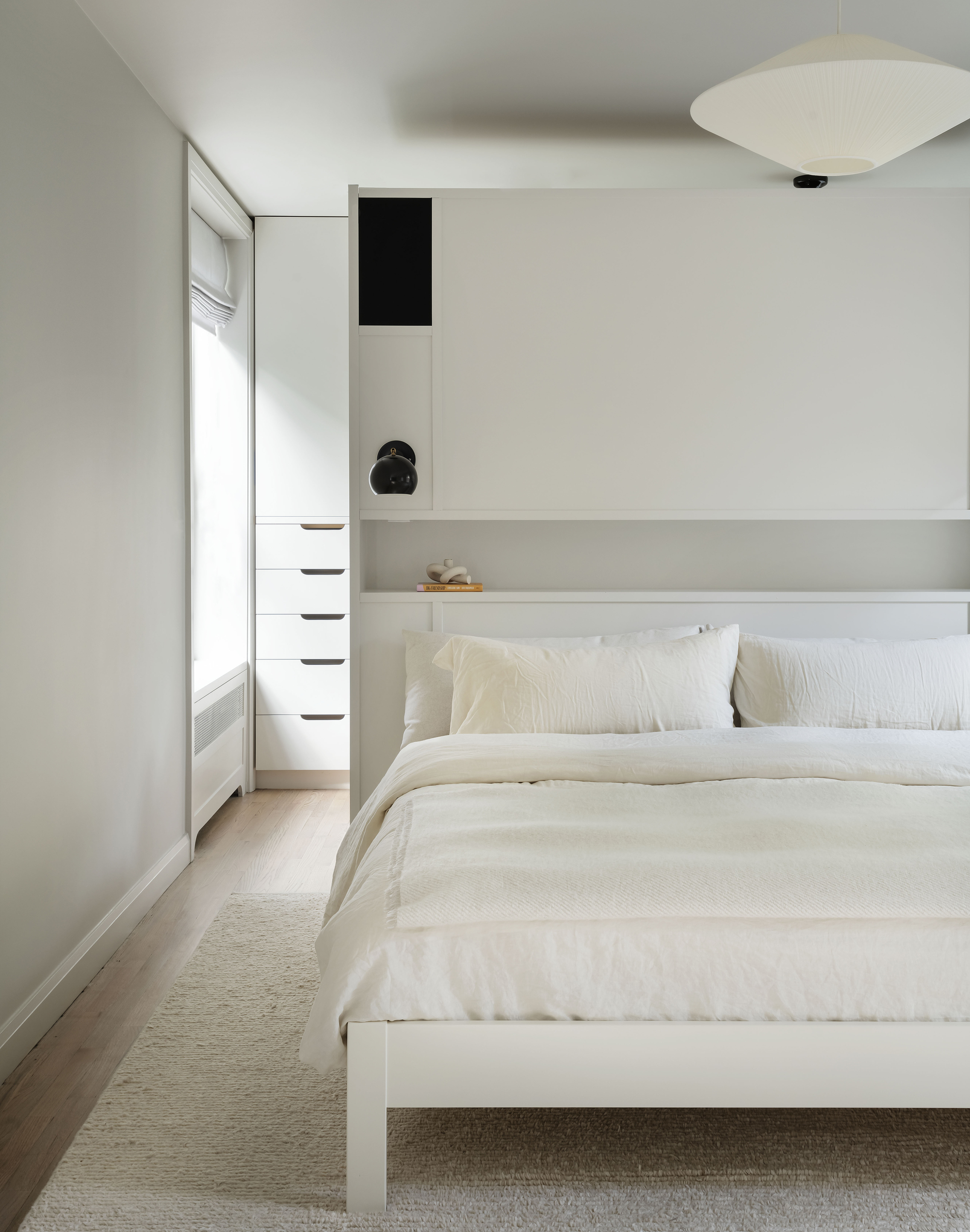What bed size works for your bedroom? A guide to getting the proportions right
Find out what bed size is right for your bedroom, from super king beds to cozy singles for a small space


When deciding what bed size works for your bedroom, there are myriad factors to consider. You need to look at the size of your room and the clearance around the bed, the people the bed will be accommodating, how often the room will be used, before settling on whether it is the right style for you.
There are also an array of styles out there to get your head round, so when purchasing this big ticket item, there really is a lot to consider. We run through the sizes to help you make the final decision on this most essential part of your bedroom furniture.
What bed size is right for a room?
To help you decide what bed size works for your room, we run through the different sizes out there, measuring up the bedroom in question, looking at the people using the bed and how this piece of information dictates what bed size to go for, bed height, bedding sizes and using beds that are raised off the ground as a storage solution.
What small bed sizes are there?
When planning for a smaller room, your options might be a Twin bed, a Twin XL or a Full bed at the top of the scale. A Twin bed measures 39 x 75 inches, while a twin XL comes in at 39 x 80 inches. These can both accommodate one person comfortably.
A Full sized bed is the top end of the small room scale at 54 x 75 inches. This will be able to fit two smaller people, doubling up in width, but has the same length as the Twin sizes.
What large bed sizes are there?
On the larger end of the scale, there are an array of beds that are larger and work for couples, going all the way from a queen bed up to the California King bed. A Queen bed measures 60" x 80", a Super Queen measures 66" x 80", a King is 76" x 80" and a California King bed comes in at 72" x 84", giving more width and even more length. Some retailers may offer some super-sized specialist beds, such as an Alaskan King Size
How to decide if the bed is right for your room size

You may want a larger bed for your bedroom, but be realistic in what your room can hold and how much space the bed is going to take up. Think about clearance either side and allowances.
The Livingetc newsletters are your inside source for what’s shaping interiors now - and what’s next. Discover trend forecasts, smart style ideas, and curated shopping inspiration that brings design to life. Subscribe today and stay ahead of the curve.
'Often in older homes, the master bedrooms are smaller and we are forced to fit a King in with minimum allowances,' says Shoshanna Shapiro of Sho and Co. 'We also have the opposite problem which is that the room is too big. In that case, we will arrange a floor plan in a way that creates sitting areas and places to keep the eye moving throughout the space. We will also consider oversizing furniture pieces and bed frames to work with the space. Finally, layer the walls with wallpaper, wood, this envelopes so the room feels more quaint.'
Every room size is different but the rule of thumb would be to check the min allowance around the bed. '30" min on each side and 36" at the foot of the bed,' advises Shoshanna. 'We generally recommend more than that but those would be the minimum allowances needed.' According to Lance Thomas of Thomas Guy Interiors, 'you want to leave at least 3 feet of space around each side and foot of the bed including the frame.' Find something in between these recommendations, avoiding pushing a bed right up against a wall on one side.
‘The best way to determine what size to purchase for your room is to use painter's tape and lay it out on the floor. Knowing the exact size you need will give you visual confirmation before purchasing,’ advises Anne Mahoney of Anne Lydia Design.
Choose the right bed for who's sleeping in it
As well as the room size, think also about who will be using the bed, as the right size bed is based on the user. Think height and weight - a taller, larger person may need more space and the rule of thumb for mattress space dictates that you ideally want at least 23 inches either side of the bed to make it comfortable.
The smaller twin beds can only really accommodate one person, but anything upwards of a full bed will fit a couple, giving each person the required 23 inches either side.
Think about how often the bedroom will be used too. A Full bed and upwards works for a guest bedroom, Twins can work nicely for children's bedrooms, and for masters, you might want at least a Queen to give it that extra feeling of luxuriousness and elegance.
If you have children, or pets, that often end up in your bed, it's worth keeping this in mind too, for a comfortable night's sleep whatever situation arises.
Look at bed height too

Always consider the height of the frame too and measure up your walls to visualise how high your frame will go. A canopy bed can take up height, but in a pared back room, the look is both stylish and sleek, like this iron framed four-poster bed from an Upper West Side townhouse home designed by Ashe Leandro.
If you want the modern feel of a platform bed and you have tall ceilings, you can play with the space in between the bed and the ceiling in a clever way. 'Use drop-down pendants instead of lamps on the nightstands,' says Shoshanna. 'This helps to bring the ceiling and the height of the bed more visually together so it feels balanced.'
A headboard can also add height to your bed but there are various things to take into consideration when looking into headboards. First off, consider the ceiling height. If you have lower ceilings, keep your headboard as low as possible. 'With lower ceilings, maybe consider a full wall installation instead of a headboard, vertical lines work nicely,' advises Shoshanna.
'In regards to getting headboard size right, I usually ask clients what they want the focus to be in the room,' says Anne Mahoney. 'If there is a great view, it's important to keep a more subtle palette. If there aren't any windows, then having a tall headboard can add interest to the room.'
Getting the bedding right to match your bed size

Never assume all sheets and bedding are going to be a perfect fit just because it is marked a certain size. This is an assumption that is easily fallen for, but in reality, bed companies often have their own slightly tailored size to ensure that you are forced to go back to them for your next purchase. 'Duvets are typically a bit smaller fit than a quilt too,' says Shoshanna.
When considering best practices for choosing bedding for your bed size, there are a couple of considerations to really think about. Firstly, always think about the mattress thickness when selecting the bedding. You want your bedding to be able to go all the way around the mattress and not ping off in the middle of the night. 'Always consider the style of the bed too - platform beds are typically tucked all around while a taller bed might need a longer blanket to cover the sides,' says Shoshanna.
When picking a duvet or quilt, measure up the bed so that it always falls over and covers at least three inches over the side.
How to organize bed storage
The higher your bed off the ground, the more space you have underneath for potential storage solutions. If more storage is your ultimate aim, try to avoid a bed that floats off the floor, as untidiness and bulky bits and pieces can creep out and get messy and unsightly.
Storage beds can be fitted with wheeled drawers or a hydraulic base that can be lifted, even with a mattress on it. They're an ideal small bedroom organization idea, but always think about whether you have space for drawers or the height for the lift mechanism. An upholstered divan base is a versatile choice that is easy to maneuver and get into the house, and often comes with smart storage solutions and a headboard. A valance can also shift the aesthetic of a divan and cleverly cover up drawers.

Former content editor at Livingetc.com, Oonagh is an expert at spotting the interior trends that are making waves in the design world. She has written a mix of everything from home tours to news, long-form features to design idea pieces, as well as having frequently been featured in the monthly print magazine. She is the go-to for design advice in the home. Previously, she worked on a London property title, producing long-read interiors features, style pages and conducting interviews with a range of famous faces from the UK interiors scene, from Kit Kemp to Robert Kime. In doing so, she has developed a keen interest in London's historical architecture and the city's distinct tastemakers paving the way in the world of interiors.